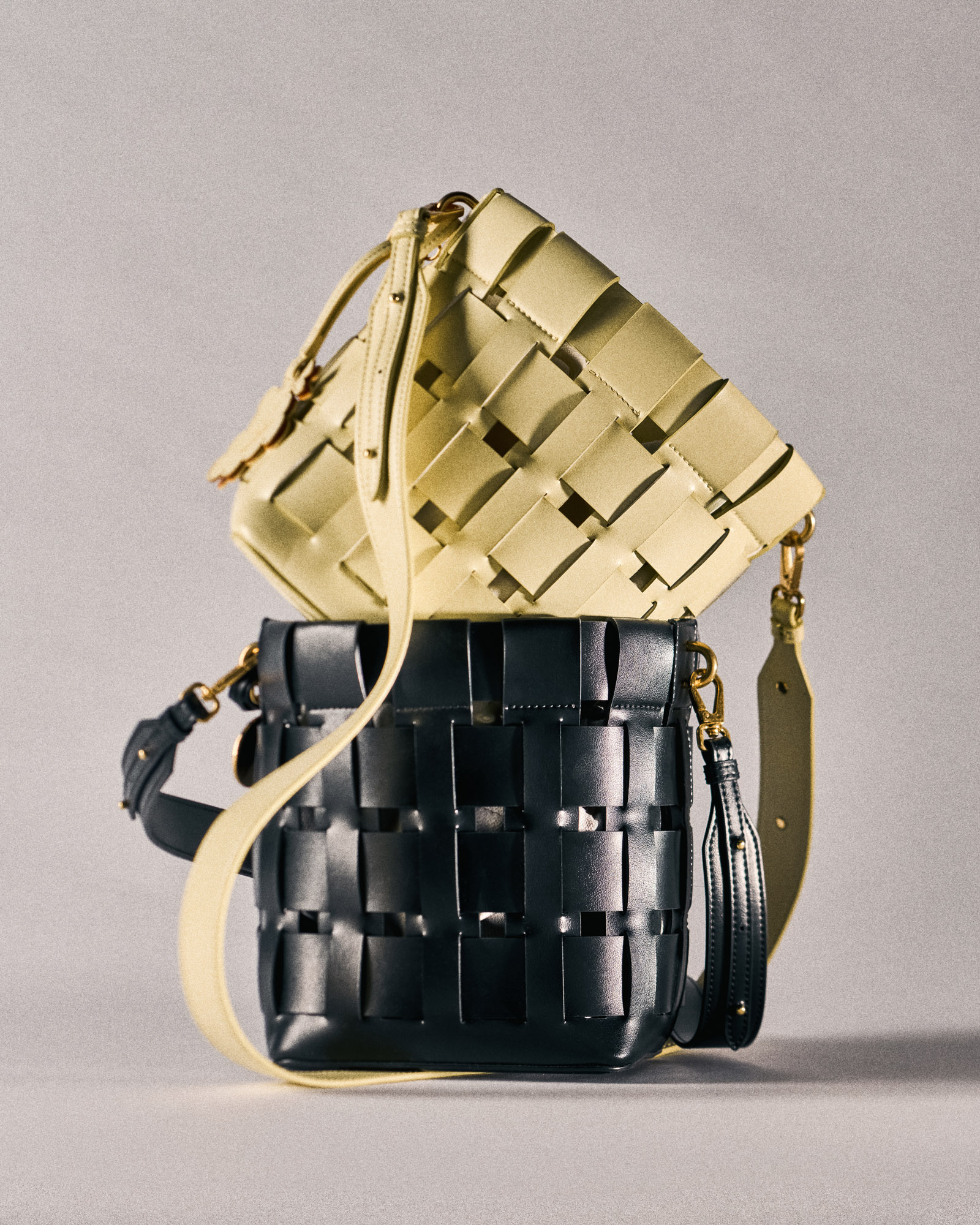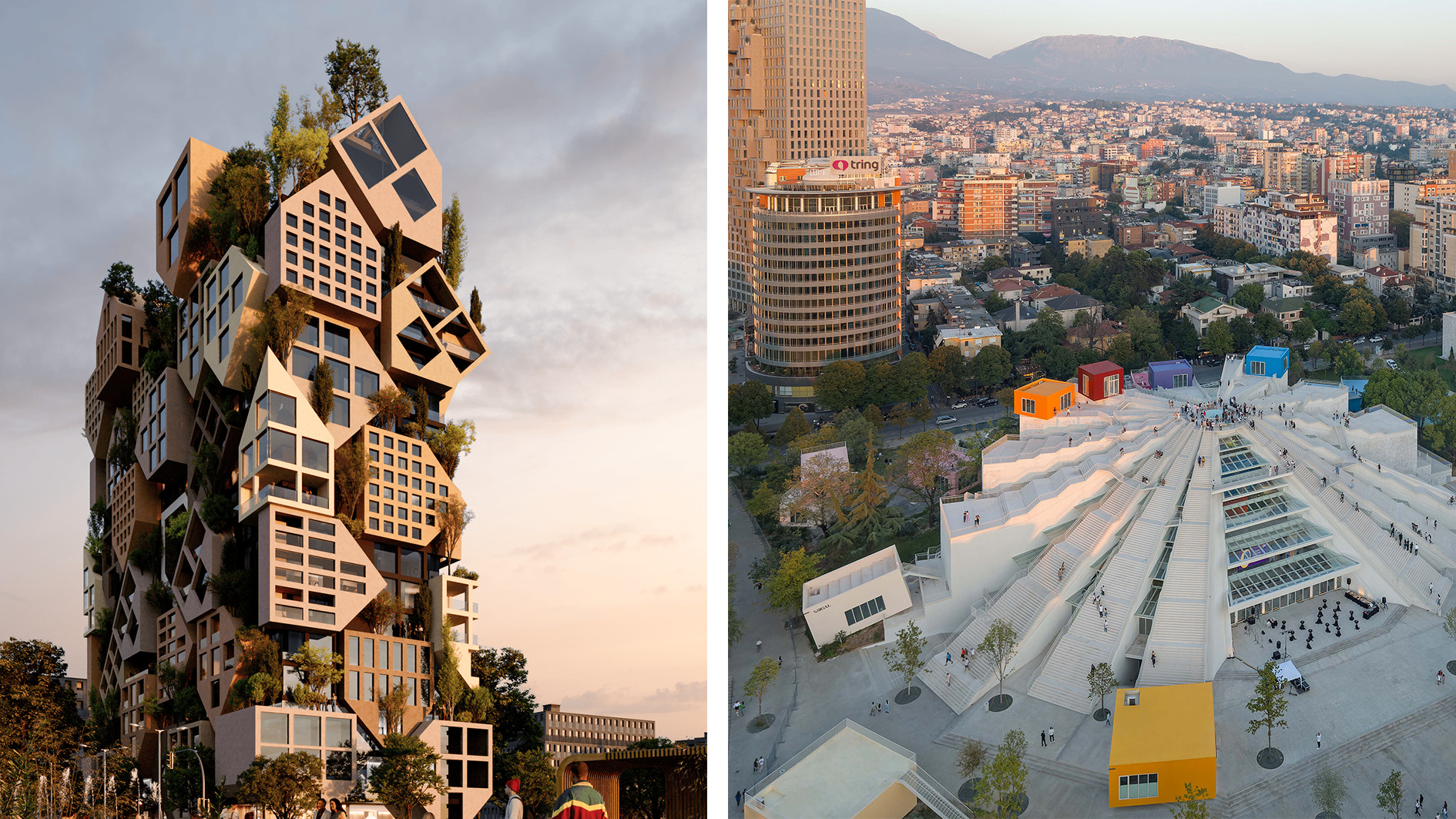How Stella McCartney is using Veuve Clicquot leftovers to create grape leather bags
Taken from the March Style Issue of Wallpaper*, Stella McCartney tells the story behind her unique collaboration with Veuve Cliquot, whereby the leftovers of the grape harvest are transformed into accessories

Neil Godwin - Photography
You might expect a designer collaborating with a champagne house to conjure up an aesthetically pleasing bottle or label, and perhaps some merch to match. But this was not the case for Stella McCartney’s recent collaboration with Veuve Clicquot. Instead, it was about what they could give her: specifically, the stalks, skins, pulp, and discarded fruits left over from the grape harvest, which takes place each year between September and October.
The reason is Vegea, a pioneering leather alternative from Italy made from the leftovers of large-scale grape farming. Founded in 2016 by furniture designer Gianpiero Tessitore and industrial chemist Francesco Merlino, it is solvent- and metal-free, and does not use any environmentally harmful substances. It also evokes real leather in weight and suppleness.
McCartney has been using Vegea for some time. She says, ‘One day I said to Bernard Arnault [CEO of luxury goods group LVMH, of which Stella McCartney is a part]: “I’m putting bags down my runway made from grape waste from the Italian wine industry, so why are we not doing it with one of your champagnes?”.’ Less than 18 months later, a woven ‘Frayme’ bucket bag, created from Vegea leather made from Veuve Clicquot grapes, appeared on the Stella McCartney catwalk.
Stella McCartney’s grape-leather bags

‘Frayme Veuve Clicquot’ bucket bags in Citron and Midnight, £1,395 each, by Stella McCartney
Now available for pre-order in limited-edition numbers, each is adorned with a tag evocative of a bunch of grapes, featuring a QR code that details the bag’s construction and traceable origins. An accompanying pair of platform sandals are also made from Vegea and feature a sole made out of popped corks from Café Clicquot, the restaurant at the house’s cellars in Reims.
The region’s strict laws about champagne production means that McCartney can trace the raw material all the way back to a single patch of grand cru vineyard in the village of Bouzy, where Veuve Clicquot grows the grapes to create the red wine needed for the house’s rosé champagne. The technique of mixing wines in this way was pioneered by the eponymous Madame Clicquot, who took over the company after her husband’s death and first purchased this vineyard patch two centuries ago.
‘Madame Clicquot’s innovations revolutionised the champagne industry,’ says McCartney. ‘She created vintage champagne and blended rosé champagne, and helped shape the modern champagne bottle, all at a time when very few businesses were owned by women [a legal loophole allowed her to inherit the vineyard as a widow]. She was truly a disruptor.’
The patch of land is also unique in Veuve Clicquot’s commitment to regenerative agriculture, which largely centres on the rejection of herbicides in favour of natural and traditional techniques. One such method is grazing sheep in the vineyards, which has been shown to improve soil quality and the bioavailability of nutrients, making for quality grapes and abundant harvests.
Wallpaper* Newsletter
Receive our daily digest of inspiration, escapism and design stories from around the world direct to your inbox.
‘Regenerative agriculture is a long-term commitment – it demonstrates our spirit of climate entrepreneurship,’ says Veuve Clicquot CEO Jean-Marc Gallot. ‘We are always testing new practices to drive the change – eco-grazing, cover cropping or [using] green manure, to name just a few.’
Gallot says he is confident that this initial collaboration with McCartney can be scaled up, and believes that such innovations should be shared with other champagne producers (‘shared, open and collective’ is how he describes the house’s approach to such regenerative practices, which are becoming more and more the norm in the region).
‘I know a lot of our customers have no idea they are buying a non-leather bag, which just shows there’s no need to kill more than one billion creatures annually,’ says McCartney, who has never used animal products in her collections and has been one of fashion’s most steadfast sustainability advocates. ‘I believe we can get to a place where leather alternatives are seen in the same way as the real thing.’
The Stella McCartney Frayme Veuve Clicquot Bucket Bag is available for pre-order at stellamccartney.com.
A version of this article appears in the March 2024 Style Issue of Wallpaper* available in print, on the Wallpaper* app on Apple iOS, and to subscribers of Apple News +. Subscribe to Wallpaper* today.
Jack Moss is the Fashion Features Editor at Wallpaper*, joining the team in 2022. Having previously been the digital features editor at AnOther and digital editor at 10 and 10 Men magazines, he has also contributed to titles including i-D, Dazed, 10 Magazine, Mr Porter’s The Journal and more, while also featuring in Dazed: 32 Years Confused: The Covers, published by Rizzoli. He is particularly interested in the moments when fashion intersects with other creative disciplines – notably art and design – as well as championing a new generation of international talent and reporting from international fashion weeks. Across his career, he has interviewed the fashion industry’s leading figures, including Rick Owens, Pieter Mulier, Jonathan Anderson, Grace Wales Bonner, Christian Lacroix, Kate Moss and Manolo Blahnik.
-
 Isolation to innovation: Inside Albania’s (figurative and literal) rise
Isolation to innovation: Inside Albania’s (figurative and literal) riseAlbania has undergone a remarkable transformation from global pariah to European darling, with tourists pouring in to enjoy its cheap sun. The country’s glow-up also includes a new look, as a who’s who of international architects mould it into a future-facing, ‘verticalising’ nation
By Anna Solomon
-
 The Lighthouse draws on Bauhaus principles to create a new-era workspace campus
The Lighthouse draws on Bauhaus principles to create a new-era workspace campusThe Lighthouse, a Los Angeles office space by Warkentin Associates, brings together Bauhaus, brutalism and contemporary workspace design trends
By Ellie Stathaki
-
 Extreme Cashmere reimagines retail with its new Amsterdam store: ‘You want to take your shoes off and stay’
Extreme Cashmere reimagines retail with its new Amsterdam store: ‘You want to take your shoes off and stay’Wallpaper* takes a tour of Extreme Cashmere’s new Amsterdam store, a space which reflects the label’s famed hospitality and unconventional approach to knitwear
By Jack Moss